How to Exchange Cryptocurrencies Without Losing Money
In the world of cryptocurrencies, exchanging your digital assets can feel like navigating a minefield. The volatility of the market can lead to significant losses if you're not careful. However, with the right strategies and knowledge, you can exchange cryptocurrencies effectively while minimizing your risks. This article will guide you through practical tips and strategies that will empower you to make informed decisions and protect your investments.
Before diving into the nitty-gritty of exchanging cryptocurrencies, it’s essential to understand what cryptocurrency exchanges are. These platforms serve as intermediaries that facilitate the buying, selling, and trading of digital currencies. There are primarily two types of exchanges: centralized and decentralized. Centralized exchanges operate like traditional stock exchanges, where a central authority manages transactions, while decentralized exchanges allow peer-to-peer trading without a central authority. Understanding these differences is crucial as they impact your trading experience and the level of risk involved.
Choosing the right exchange can be the difference between a profitable trade and a costly mistake. When selecting an exchange, consider the following key factors:
- Security: Look for exchanges with robust security measures, such as two-factor authentication and cold storage for funds.
- Fees: Different exchanges have varying fee structures that can impact your overall profits. Always read the fine print.
- User Experience: A user-friendly interface can make your trading experience smoother and more enjoyable.
Security should always be your top priority when choosing an exchange. In a space where hacks and scams are all too common, it's vital to ensure your assets are protected. Look for exchanges that offer:
- Two-Factor Authentication (2FA): This adds an extra layer of security by requiring a second form of verification.
- Cold Storage: Keeping the majority of user funds in offline storage can protect them from online threats.
- Insurance: Some exchanges offer insurance policies to cover potential losses due to hacks.
Understanding the regulatory environment of cryptocurrency exchanges is crucial. Regulations vary by jurisdiction and can significantly impact the reliability of an exchange. Make sure to choose platforms that comply with local laws and regulations. This compliance not only ensures that the exchange operates legally but also provides a level of protection for users against fraud.
Every exchange has its fee structure, which can include trading fees, withdrawal fees, and deposit fees. Here’s a brief overview of common fees:
| Type of Fee | Description |
|---|---|
| Trading Fee | A percentage of the total trade amount charged for executing trades. |
| Withdrawal Fee | A fee charged when you withdraw your funds from the exchange. |
| Deposit Fee | Some exchanges may charge a fee for depositing funds. |
Understanding these fees will help you choose an exchange that aligns with your trading strategy and minimizes costs.
A user-friendly interface can significantly enhance your trading experience. A well-designed platform allows you to navigate effortlessly, making it easier to execute trades quickly. When selecting an exchange, consider how intuitive the interface is. A confusing layout can lead to costly mistakes, especially in the fast-paced world of cryptocurrency trading. Always opt for exchanges that offer demo accounts or trial periods so you can familiarize yourself with their interface before committing your funds.
Implementing best practices can significantly reduce the risk of losses in the cryptocurrency market. One of the most effective strategies is diversification. By spreading your investments across different cryptocurrencies, you can mitigate the risks associated with market volatility. Think of your portfolio like a well-balanced meal; a good mix of different nutrients (or cryptocurrencies) ensures you’re less likely to suffer from deficiencies (or losses).
Diversification helps to cushion your investments against market fluctuations. Instead of putting all your eggs in one basket, consider investing in a mix of established cryptocurrencies like Bitcoin and Ethereum, along with promising altcoins. This way, if one asset performs poorly, others may perform well, balancing out your overall portfolio performance.
Stop-loss orders are essential tools for protecting your investments. By setting a stop-loss order, you can automatically sell a cryptocurrency when it reaches a certain price, limiting your potential losses. This strategy is particularly useful in a volatile market where prices can swing dramatically in a short period. Think of it as a safety net that catches you before you fall too far.
Staying informed about market trends is crucial for successful trading. The cryptocurrency landscape is constantly evolving, and being aware of the latest news and developments can give you a competitive edge. Utilize resources such as market analysis tools, news websites, and social media platforms to keep your finger on the pulse of the market.
Market analysis tools can provide valuable insights into price movements and trends. Familiarize yourself with various types of analysis, including technical analysis, which uses historical price data to predict future movements, and fundamental analysis, which considers the underlying factors driving the value of a cryptocurrency. By combining these analyses, you can make more informed trading decisions.
Influencers and experts can shape market trends, so it’s essential to identify and follow credible sources for timely insights and predictions. Social media platforms like Twitter and LinkedIn are great places to find industry leaders who share valuable information. However, always approach their advice with caution and conduct your own research before making trading decisions.
Q: Can I lose all my money in cryptocurrency trading?
A: Yes, cryptocurrency trading carries significant risks, and it is possible to lose your entire investment. It's crucial to educate yourself and implement risk management strategies.
Q: How do I choose the best cryptocurrency to invest in?
A: Research is key. Look into the project's fundamentals, market trends, and community support before investing.
Q: Are cryptocurrency exchanges safe?
A: While many exchanges implement strong security measures, no exchange is entirely risk-free. Always choose reputable exchanges and use additional security practices.

Understanding Cryptocurrency Exchanges
When diving into the world of cryptocurrencies, the first thing you'll encounter is the concept of cryptocurrency exchanges. These platforms are essentially the marketplaces where you can buy, sell, and trade cryptocurrencies. Just like a bustling marketplace filled with vendors and customers, exchanges facilitate transactions, allowing traders to exchange traditional fiat currencies for digital assets or swap one cryptocurrency for another. However, not all exchanges are created equal, and understanding the different types is crucial for making informed decisions.
There are primarily two types of exchanges: centralized exchanges (CEX) and decentralized exchanges (DEX). Centralized exchanges are operated by companies that act as intermediaries between buyers and sellers. They provide a user-friendly interface, high liquidity, and a wide range of trading pairs. However, they also come with certain risks, such as potential hacks and regulatory scrutiny. On the other hand, decentralized exchanges operate without a central authority, allowing users to trade directly with one another. While they offer greater privacy and security, they may have lower liquidity and can be more complex to navigate.
Understanding how these exchanges function is vital. For instance, centralized exchanges often require users to create accounts and complete identity verification processes, which can be a hassle but provides a layer of security. In contrast, decentralized exchanges might allow users to trade without an account, but this anonymity can lead to challenges in terms of trust and transaction speed. It's like choosing between a well-known grocery store with a loyalty program and a local farmer's market where you haggle for prices—each has its benefits and drawbacks.
Moreover, the user experience on these platforms can vary significantly. A good exchange will have a clean, intuitive interface that makes it easy to navigate, even for beginners. This is crucial because, in the fast-paced world of cryptocurrency trading, every second counts. If you're fumbling around trying to figure out how to place an order, you might miss out on a golden opportunity. Therefore, it's essential to choose an exchange that not only meets your trading needs but also feels comfortable to use.
In addition to functionality, you should also consider the security measures that exchanges have in place. Look for features like two-factor authentication, cold storage for funds, and insurance policies that protect against breaches. The last thing you want is to wake up one morning to find your hard-earned investments have vanished due to a security flaw. It’s like locking your front door but leaving the window wide open—what’s the point?
Lastly, the regulatory landscape surrounding cryptocurrency exchanges is constantly evolving. Different countries have different laws, and an exchange's compliance with these regulations can significantly impact its reliability. For instance, exchanges that adhere to strict regulatory standards are generally considered safer and more trustworthy. This is something to keep in mind as you choose where to trade.
In summary, understanding cryptocurrency exchanges is not just about knowing where to buy and sell. It's about recognizing the various types of exchanges, their unique features, and how they align with your trading goals. As you embark on your cryptocurrency journey, take the time to explore these platforms and find the one that best fits your needs. After all, in the world of crypto, knowledge is power!

Choosing the Right Exchange
When it comes to exchanging cryptocurrencies, the choice of exchange can make a significant difference in your trading experience and overall profitability. With the myriad of options available, it’s essential to approach this decision with careful consideration. Think of the exchange as your gateway to the crypto world; choosing the right one can feel like finding the perfect car for a long road trip. You want reliability, comfort, and safety. So, what should you keep in mind while selecting your exchange?
First and foremost, security is paramount. You wouldn’t want to leave your car unlocked in a sketchy neighborhood, right? Similarly, you need to ensure that the exchange you choose has robust security measures in place. Look for features like two-factor authentication, which adds an extra layer of protection by requiring a second form of verification before you can access your account. Additionally, consider whether the exchange uses cold storage for the majority of its assets. Cold storage means that the funds are kept offline, making them less vulnerable to hacks.
Another critical factor is the fee structure. Different exchanges have different fees for trading, withdrawals, and deposits. Understanding these fees is crucial because they can eat into your profits. For instance, some exchanges charge a flat fee per transaction, while others might take a percentage of your trade. Here’s a quick breakdown of common fees you might encounter:
| Fee Type | Description |
|---|---|
| Trading Fees | Fees charged for executing trades on the exchange. |
| Withdrawal Fees | Fees charged when you withdraw your funds from the exchange. |
| Deposit Fees | Fees for depositing funds into your account. |
Next up, consider the user experience. A user-friendly interface can make a world of difference, especially if you’re new to trading. Imagine trying to navigate a complicated GPS system while driving; it can be frustrating and lead to mistakes. A well-designed platform allows you to focus on trading rather than fumbling around with confusing navigation. Look for exchanges that offer a clean layout, easy access to trading tools, and responsive customer support.
Lastly, don’t overlook the regulatory compliance of the exchange. Different countries have varying regulations that can impact your trading experience. An exchange that complies with local laws not only provides a layer of protection but also ensures that your funds are handled responsibly. It’s like choosing a restaurant that follows health regulations; you want to know that what you’re consuming is safe and trustworthy.
In summary, choosing the right exchange is a multifaceted decision that requires careful thought. By prioritizing security, understanding fee structures, ensuring a good user experience, and checking for regulatory compliance, you can set yourself up for a more successful trading journey. Remember that this choice is not just about convenience; it’s about safeguarding your investments and maximizing your potential returns.
- What should I prioritize when selecting a cryptocurrency exchange? Focus on security, fees, user experience, and regulatory compliance.
- Are all exchanges regulated? No, regulatory compliance varies by country and exchange. Always check the regulations applicable to your location.
- How can I ensure the security of my funds on an exchange? Look for exchanges that offer two-factor authentication, cold storage, and insurance for your assets.

Security Features to Look For
When it comes to exchanging cryptocurrencies, security should be at the forefront of your mind. The digital currency landscape is rife with risks, and a single oversight can lead to significant losses. So, what should you look for in a secure cryptocurrency exchange? Let’s break it down.
First and foremost, two-factor authentication (2FA) is a must-have feature. This adds an extra layer of security by requiring not just your password but also a second form of identification, typically a code sent to your mobile device. Think of it as a double lock on your front door; it makes it much harder for intruders to get in.
Another critical aspect is cold storage for cryptocurrencies. This means that a significant portion of the exchange's assets is stored offline, away from potential online threats. Imagine keeping your valuables in a safe instead of leaving them out in the open; cold storage works similarly, providing peace of mind that your assets are less susceptible to hacks.
Moreover, it's essential to check if the exchange offers any insurance policies for user funds. Some exchanges provide insurance against hacking incidents, which can be a lifesaver if the worst happens. While insurance doesn’t guarantee that you won’t lose money, it does offer a safety net that can help mitigate losses.
In addition to these features, you should also consider the exchange's track record. Research its history regarding security breaches. If an exchange has faced multiple hacks or security issues, it might be best to steer clear. Trust is paramount in the cryptocurrency world, and a solid reputation can often indicate a commitment to user safety.
Lastly, don’t overlook the importance of a transparent security policy. A reputable exchange should clearly outline their security measures and protocols. If you can’t find this information easily, or if the exchange is vague about its security practices, that’s a red flag. Transparency builds trust, and in the world of cryptocurrencies, trust is invaluable.
In summary, when evaluating a cryptocurrency exchange, keep an eye out for:
- Two-factor authentication
- Cold storage for funds
- Insurance policies for user assets
- A solid security track record
- A transparent security policy
By prioritizing these features, you can significantly enhance your trading experience and minimize the risks associated with exchanging cryptocurrencies. Remember, in the volatile world of crypto, it's always better to be safe than sorry!
Q: What is two-factor authentication?
A: Two-factor authentication (2FA) is a security measure that requires two forms of verification before granting access to your account, typically your password and a code sent to your mobile device.
Q: Why is cold storage important?
A: Cold storage keeps a majority of the exchange’s funds offline, protecting them from online threats and hacks.
Q: How can I verify an exchange's security track record?
A: Research the exchange online, read reviews, and check for any reported security breaches or issues in the past.
Q: Is insurance for my funds necessary?
A: While it’s not mandatory, having insurance can provide additional peace of mind in case of a security breach.
Q: How do I know if an exchange is transparent about its security?
A: Look for clear and detailed information on their website regarding their security measures and protocols. If this information is hard to find or vague, it may be a cause for concern.

Regulatory Compliance
Understanding is crucial for anyone looking to trade cryptocurrencies safely and effectively. As the cryptocurrency market continues to evolve, governments and regulatory bodies around the world are increasingly stepping in to provide guidelines and regulations that ensure the protection of investors and the integrity of the financial system. But what does this mean for you as a trader? Essentially, it means that the exchanges you choose to use should adhere to these regulations to minimize your risk of fraud and ensure that your investments are protected.
Different countries have varying regulations concerning cryptocurrency trading. For instance, in the United States, the Financial Crimes Enforcement Network (FinCEN) requires exchanges to register as money services businesses (MSBs) and comply with anti-money laundering (AML) laws. In contrast, countries like Japan have established a more structured regulatory framework, requiring exchanges to obtain licenses and undergo regular audits. This disparity can create a complex landscape for traders, making it vital to understand the regulations relevant to your location and the exchanges you are considering.
When selecting a cryptocurrency exchange, it's essential to verify its compliance status. Look for exchanges that are transparent about their regulatory standing and provide information about their licensing and compliance measures. Here are some key aspects to consider:
- Licensing: Does the exchange hold licenses from reputable regulatory bodies?
- Transparency: Is the exchange open about its compliance measures and audits?
- Consumer Protection: What measures are in place to protect users' funds?
Additionally, regulatory compliance can impact the user experience. Exchanges that adhere to strict regulations often provide a more secure environment, which can enhance your trading experience. They may offer better customer support, clearer terms of service, and a more trustworthy platform overall. This can be especially important during times of high market volatility when quick access to support can make a significant difference.
In summary, regulatory compliance is not just a legal requirement but a vital component of a safe and successful trading experience. By choosing exchanges that prioritize compliance, you can protect your investments and navigate the cryptocurrency market with greater confidence.
- What is regulatory compliance in cryptocurrency trading?
Regulatory compliance refers to the adherence of cryptocurrency exchanges to laws and regulations set by government authorities to ensure safe trading practices and protect investors. - Why is it important to choose a compliant exchange?
Choosing a compliant exchange minimizes risks associated with fraud, ensures better security for your funds, and provides a more reliable trading environment. - How can I verify an exchange's compliance?
You can verify an exchange's compliance by checking its licensing status, reading user reviews, and looking for transparency regarding its regulatory measures.
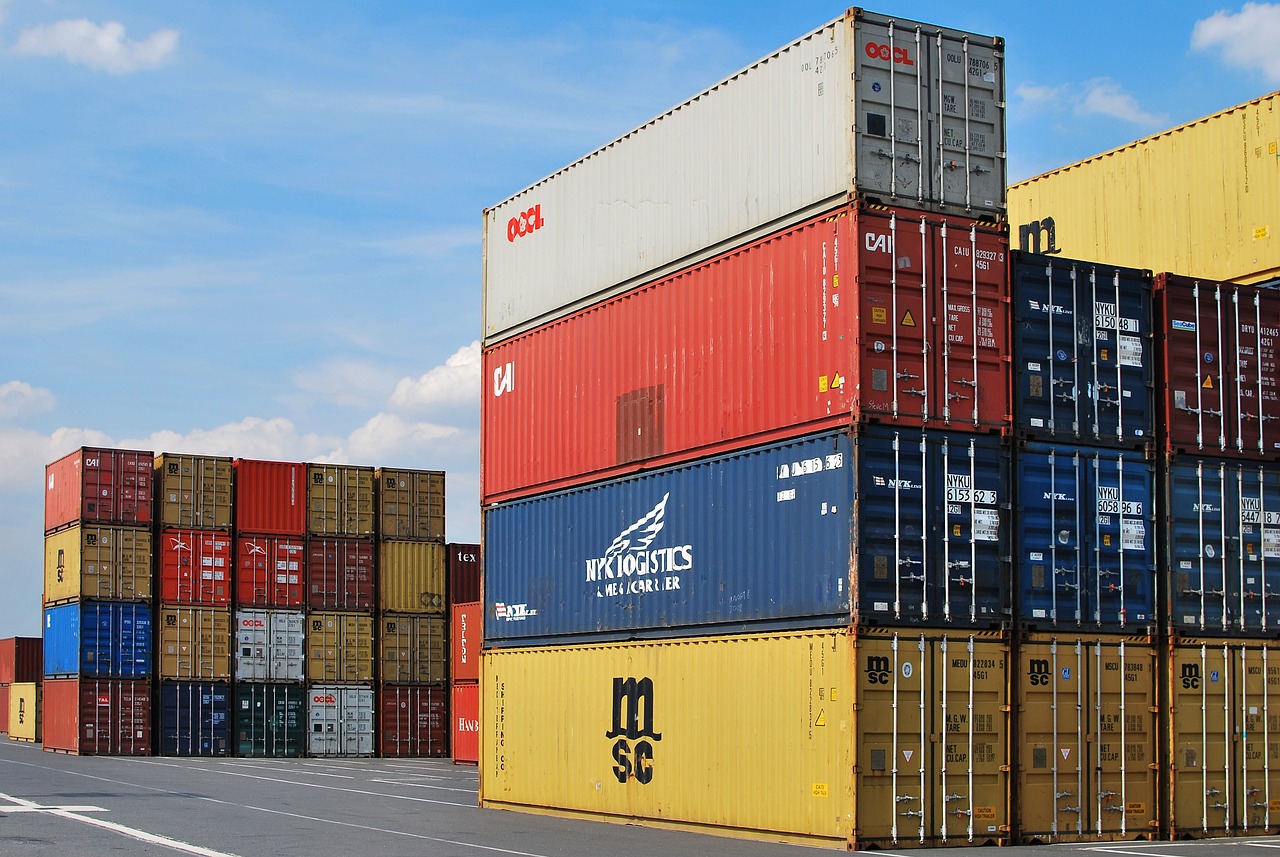
Fee Structures Explained
When diving into the world of cryptocurrency trading, understanding fee structures is essential for maximizing your profits and minimizing losses. Different exchanges have various fees associated with trading, and these can significantly impact your overall returns. Imagine you’re buying a car; you wouldn’t just look at the sticker price, right? You’d also consider taxes, insurance, and maintenance costs. The same principle applies here!
There are several types of fees you should be aware of:
- Trading Fees: This is the most common fee and is charged when you buy or sell cryptocurrency. It can either be a flat fee or a percentage of the transaction amount. For example, if you trade $1,000 worth of Bitcoin and the exchange charges a 0.2% fee, you’ll pay $2.
- Withdrawal Fees: When you decide to take your funds off the exchange and into your personal wallet, a withdrawal fee may apply. This fee varies from exchange to exchange and can sometimes be a flat fee or based on the amount you’re withdrawing.
- Deposit Fees: Some exchanges charge fees for depositing funds, especially if you’re using credit cards or other payment methods. It’s crucial to check if the exchange you’re considering has such fees.
Here’s a quick breakdown of how fees can stack up:
| Fee Type | Example Fee | Impact on Profit |
|---|---|---|
| Trading Fee | 0.2% of transaction | Reduces total profit on trades |
| Withdrawal Fee | $5 per withdrawal | Can deter frequent withdrawals |
| Deposit Fee | 3% for credit card | Increases initial investment cost |
Understanding these fees allows you to make informed decisions about where to trade. Some exchanges may seem appealing at first glance due to their low trading fees, but if their withdrawal fees are sky-high, you might end up losing more in the long run. Always read the fine print and consider the total cost of trading on any given platform.
Moreover, keep an eye out for promotional offers. Some exchanges offer zero trading fees for a limited time or for specific trading pairs. These promotions can be a fantastic way to boost your trading experience without the burden of fees. However, be cautious and ensure that these offers align with your trading strategy.
In conclusion, being aware of the fee structures is not just about saving a few bucks; it’s about optimizing your trading strategy and ensuring that you’re not caught off guard. Just like a savvy shopper who knows how to hunt for the best deals, becoming fee-savvy will help you navigate the crypto landscape more effectively.
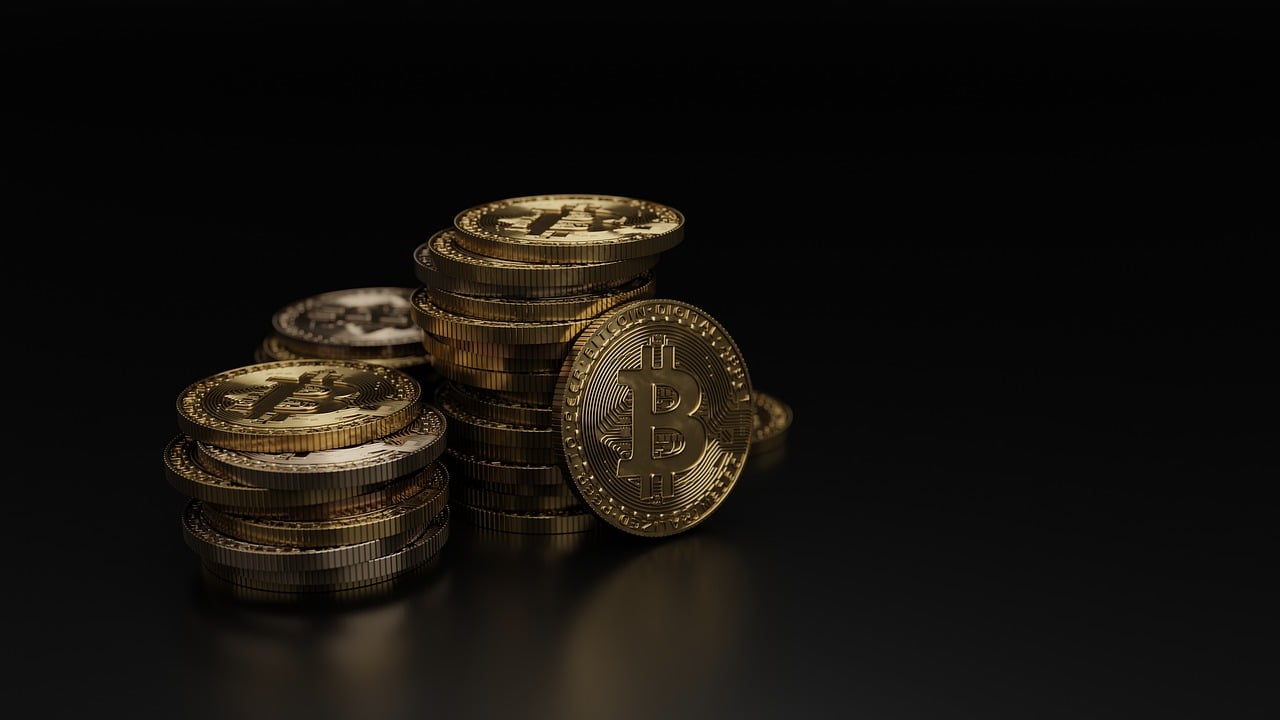
User Experience and Interface
When it comes to trading cryptocurrencies, the user experience (UX) and interface of an exchange can make or break your trading journey. Imagine trying to navigate a maze blindfolded; that’s what trading on a poorly designed platform feels like. A seamless and intuitive interface not only enhances your trading efficiency but also reduces the likelihood of making costly mistakes. So, what should you look for in a user-friendly exchange?
First off, consider the layout. A well-organized interface should allow you to find what you need quickly. Look for exchanges that present information clearly, with easy access to market data, trade history, and account settings. A cluttered or confusing layout can lead to frustration, especially when the market is moving fast and you need to make quick decisions.
Another critical aspect is the speed and responsiveness of the platform. A laggy interface can result in missed opportunities or delayed trades, which can be detrimental in a volatile market. You want a platform that reacts instantly to your commands, whether you’re buying, selling, or checking your portfolio. Testing the platform with a demo account can give you a sense of its responsiveness before you commit real funds.
Moreover, mobile compatibility is essential in today’s fast-paced world. Many traders prefer to manage their investments on the go, so ensure that the exchange offers a robust mobile app or a mobile-optimized website. This way, you can keep track of your trades and make adjustments whenever necessary, without being tethered to your desktop.
Lastly, consider the customer support available through the exchange. An intuitive interface is great, but what happens if you encounter an issue? Look for exchanges that offer multiple support channels, such as live chat, email, and comprehensive help centers. Quick and effective customer support can save you time and money, especially during critical trading moments.
In summary, a user-friendly experience can greatly influence your trading success. By prioritizing a clean layout, speed, mobile access, and solid customer support, you can navigate the cryptocurrency market with confidence and ease. Remember, the right exchange can be your best ally in this thrilling yet unpredictable trading landscape.
- What is the importance of user experience in cryptocurrency trading?
User experience is crucial as it affects how easily traders can navigate the platform, make trades, and manage their portfolios. A good UX minimizes mistakes and enhances trading efficiency. - How can I test an exchange's user interface before trading?
Many exchanges offer demo accounts or trial periods where you can explore their interface without risking real money. Take advantage of these options to find a platform that suits your needs. - What should I do if I encounter issues on an exchange?
If you face any issues, reach out to the exchange’s customer support through their available channels. A responsive support team can help resolve your problems quickly.
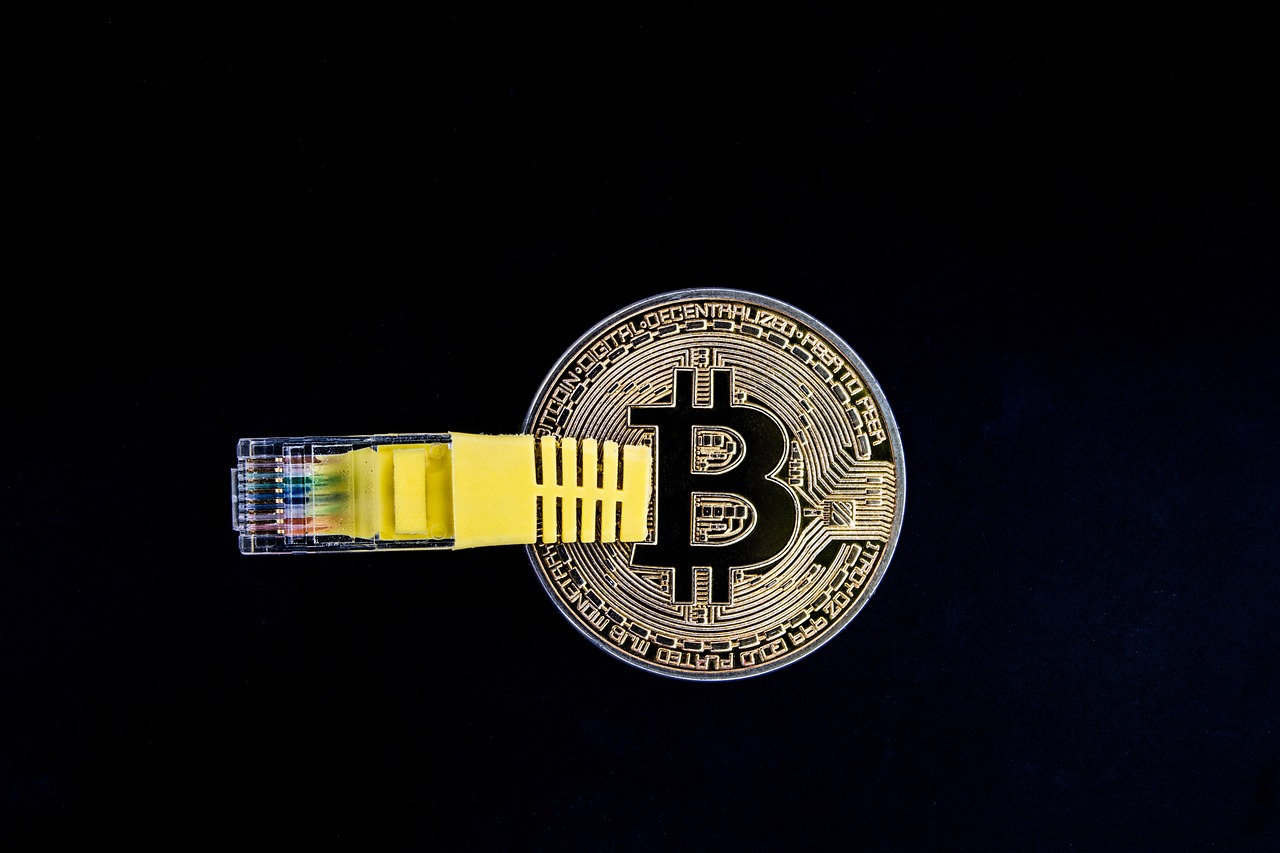
Best Practices for Trading
When it comes to trading cryptocurrencies, it's essential to adopt best practices that can safeguard your investments and enhance your trading experience. The cryptocurrency market is notoriously volatile, and without a solid strategy, you could find yourself facing significant losses. So, how can you navigate this unpredictable landscape effectively? Let's dive into some fundamental strategies that can help you trade wisely while minimizing risks.
One of the most effective ways to manage risk is through diversification. Just like a balanced diet is crucial for your health, spreading your investments across various cryptocurrencies can help you mitigate potential losses. Imagine putting all your eggs in one basket; if that basket falls, you lose everything. Instead, consider allocating your funds among different assets. This way, if one cryptocurrency experiences a downturn, others may perform well and cushion the blow. A diversified portfolio can include a mix of established coins like Bitcoin and Ethereum, as well as promising altcoins that have potential for growth.
Another critical practice is setting stop-loss orders. These are essential tools that allow you to limit your losses by automatically selling your assets when they reach a certain price point. Think of stop-loss orders as your safety net; they protect you from significant downturns in the market. For instance, if you buy a cryptocurrency at $100 and set a stop-loss order at $90, your investment will be sold if the price drops to that level. This way, you can prevent further losses and preserve your capital for future trades. It's important to analyze market trends and set your stop-loss levels wisely to ensure you’re not selling prematurely.
In addition to these strategies, staying informed about market trends is crucial for successful trading. The cryptocurrency landscape is constantly evolving, and being aware of the latest news, regulatory changes, and technological advancements can give you an edge. Utilize market analysis tools that provide insights into price movements and trading volumes. These tools can help you make informed decisions based on data rather than emotions. For example, platforms like CoinMarketCap and TradingView offer valuable resources for tracking market trends and conducting technical analysis.
Moreover, following influential market figures can provide timely insights and predictions. Many experts share their thoughts on social media platforms or through dedicated blogs and podcasts. By identifying credible sources, you can gain a better understanding of market sentiment and potential future movements. However, be cautious; not all influencers have your best interests at heart. Always cross-reference their information with reliable data to avoid falling for hype or misinformation.
Lastly, keep in mind that patience is a virtue in trading. The temptation to react impulsively to market fluctuations can lead to poor decisions. Instead, adopt a long-term perspective and stick to your trading plan. Set realistic goals and be prepared for ups and downs. Remember, trading is not a sprint; it's a marathon. By following these best practices, you can enhance your trading strategies and navigate the cryptocurrency market more effectively.
- What is diversification in cryptocurrency trading? Diversification involves spreading your investments across different cryptocurrencies to reduce risk. By not putting all your funds into one asset, you can mitigate potential losses.
- How do stop-loss orders work? Stop-loss orders automatically sell your cryptocurrency at a predetermined price to limit losses. This helps protect your investments during market downturns.
- Why is market analysis important? Market analysis helps traders understand price movements and trends, allowing for informed decision-making rather than emotional trading.
- How can I identify credible market influencers? Look for influencers with a proven track record, substantial following, and transparent communication. Always verify their claims with reliable data.

Diversifying Your Portfolio
Diversifying your cryptocurrency portfolio is like adding different spices to a dish; it enhances flavor while reducing the risk of a bland outcome. In the volatile world of cryptocurrencies, where prices can soar to the moon or plummet within hours, spreading your investments across various digital assets can significantly mitigate potential losses. Instead of putting all your eggs in one basket—say, a single cryptocurrency like Bitcoin—consider a more balanced approach. By diversifying, you not only protect yourself from the unpredictable swings of the market but also position yourself to capitalize on the unique growth opportunities that different cryptocurrencies offer.
Imagine you have invested heavily in one cryptocurrency, and suddenly a major news event causes its value to drop sharply. If that’s your only investment, you could find yourself in a precarious situation. However, if you had allocated your funds across several different cryptocurrencies, the impact of that one drop would be cushioned by the performance of others. This strategy is essential for risk management, especially for those who are new to the crypto scene and might not yet have a firm grasp on market dynamics.
When considering how to diversify your portfolio, think about including a mix of established cryptocurrencies, like Bitcoin and Ethereum, alongside emerging altcoins that have potential for growth. Here are a few categories to consider when diversifying:
- Major Cryptocurrencies: These are well-established coins with a large market cap, such as Bitcoin and Ethereum.
- Altcoins: These are alternatives to Bitcoin, often offering unique features or use cases, like Litecoin or Cardano.
- Stablecoins: These cryptocurrencies are pegged to stable assets like the US Dollar, providing a safe haven during market volatility.
- New Projects: Investing in new and promising projects can yield high returns, but they come with higher risks.
As you build your diversified portfolio, it’s crucial to regularly review and adjust your holdings. The cryptocurrency market is incredibly dynamic, and what may be a sound investment today could become less favorable tomorrow. By keeping an eye on market trends, technological advancements, and regulatory changes, you can make informed decisions about when to buy or sell different assets. Remember, the goal is to create a balanced portfolio that aligns with your risk tolerance and investment goals.
In conclusion, diversifying your cryptocurrency portfolio is not just a smart strategy; it’s a necessary one in the ever-changing landscape of digital assets. By spreading your investments across various cryptocurrencies, you can better manage risk and increase your chances of achieving long-term success. Just like a well-balanced meal nourishes your body, a diversified portfolio can nourish your investment journey, leading to potentially fruitful outcomes.
Q: Why is diversification important in cryptocurrency trading?
A: Diversification helps reduce risk by spreading investments across different assets, minimizing the impact of a poor-performing asset on your overall portfolio.
Q: How many cryptocurrencies should I include in my portfolio?
A: There's no one-size-fits-all answer, but a mix of 5-10 different cryptocurrencies can provide a good balance while still being manageable.
Q: Should I invest in stablecoins?
A: Yes, including stablecoins can provide stability during market volatility, acting as a safe haven for your investments.
Q: How often should I review my portfolio?
A: Regular reviews, at least quarterly or after significant market movements, can help you stay aligned with your investment goals and adjust to market changes.

Setting Stop-Loss Orders
In the unpredictable world of cryptocurrency trading, one of the smartest moves you can make is to set stop-loss orders. Think of a stop-loss order as your safety net; it’s designed to protect your investments by automatically selling your assets when they reach a certain price. This way, you can minimize your losses during those dreaded market downturns. But how do you effectively set these orders? Let’s break it down!
First off, it’s essential to understand that a stop-loss order is not just a “set it and forget it” tool. You need to be strategic about where you place it. A common approach is to set your stop-loss at a percentage below the current market price. For instance, if you buy a cryptocurrency at $100 and want to limit your losses to 10%, you would set your stop-loss at $90. This means that if the price drops to $90, your order will trigger, and your asset will be sold automatically.
However, placing your stop-loss too close to the current price can lead to unnecessary sales due to market volatility. Cryptocurrencies are notorious for their price swings, and you don’t want to panic-sell when the market fluctuates. Instead, consider placing your stop-loss a bit further away, perhaps at 15-20% below the purchase price, depending on the coin's volatility. This gives your investment some breathing room while still protecting you from significant losses.
Another crucial aspect to consider is the type of stop-loss order you choose. There are two main types:
- Standard Stop-Loss Orders: This type executes a market order once the stop price is reached. It’s straightforward but can result in slippage, meaning you might sell at a lower price than expected during rapid market changes.
- Trailing Stop-Loss Orders: This dynamic option adjusts the stop price as the market price moves in your favor. For example, if you set a trailing stop-loss at 10% below the current price, and the price rises to $120, your stop-loss will automatically adjust to $108. This way, you can lock in profits while still having a safety net.
Now, you might be wondering, “What if I’m not around to monitor the market?” That’s where the beauty of stop-loss orders shines. Once set, they operate independently, allowing you to focus on other things without constantly checking your portfolio. But remember, while stop-loss orders are a fantastic tool, they are not foolproof. In extreme market conditions, prices can gap down, and your order may not execute at the desired price.
In conclusion, setting stop-loss orders is a fundamental strategy for anyone looking to navigate the turbulent waters of cryptocurrency trading. By placing these orders thoughtfully and understanding the different types available, you can better protect your investments and avoid the emotional rollercoaster that comes with trading. Just like a seasoned sailor uses a compass to steer clear of storms, a well-placed stop-loss order can help you weather the unpredictable seas of the crypto market.
Q: What is a stop-loss order?
A stop-loss order is an order placed with a broker to buy or sell once the stock reaches a certain price, helping to limit potential losses.
Q: How do I set a stop-loss order?
You can set a stop-loss order through your trading platform by specifying the price at which you want the order to trigger.
Q: Can stop-loss orders guarantee profits?
No, stop-loss orders cannot guarantee profits; they are primarily designed to minimize losses.
Q: What is the difference between a standard and a trailing stop-loss order?
A standard stop-loss order is fixed at a specific price, while a trailing stop-loss order moves with the market price, allowing for potential gains while still protecting against losses.
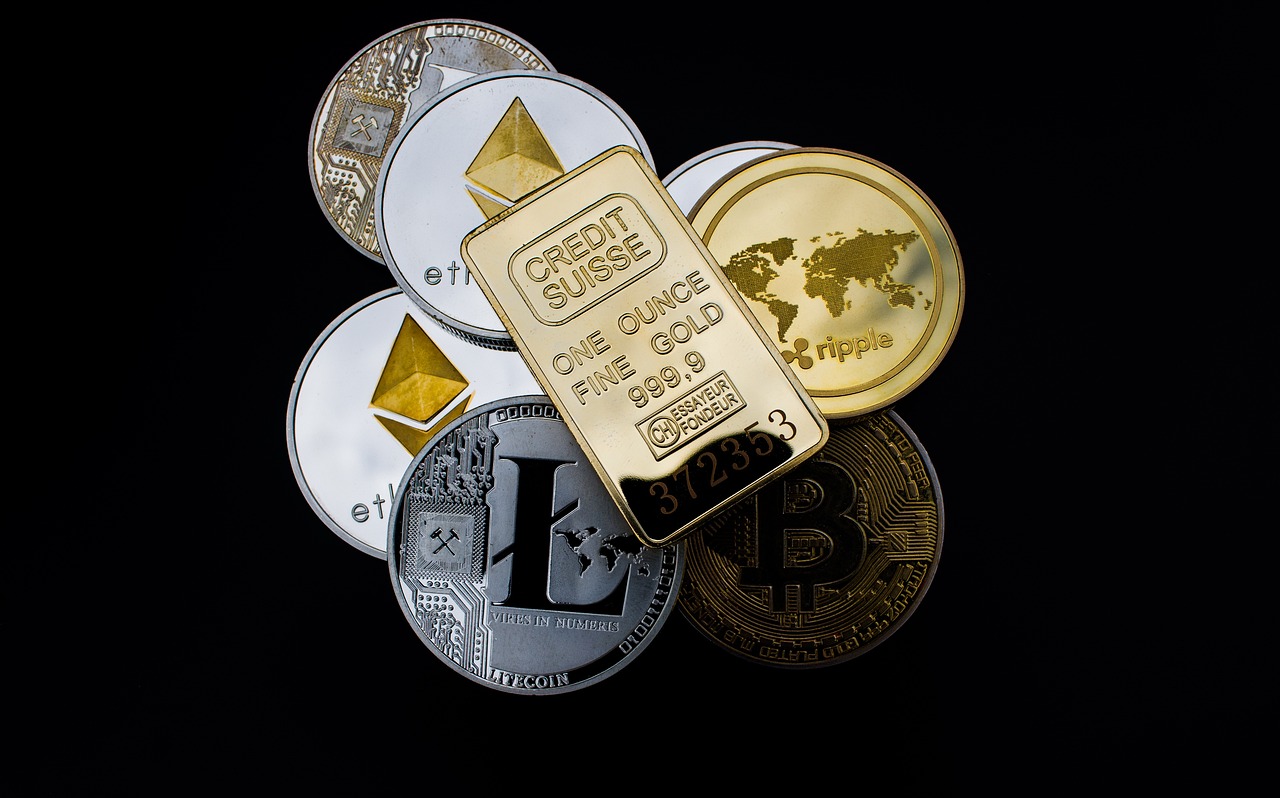
Keeping Up with Market Trends
In the fast-paced world of cryptocurrency, keeping up with market trends is not just a good idea; it's essential for your trading success. Imagine trying to navigate a stormy sea without a compass—without the right information, you could easily find yourself lost or, worse, capsized. So, how do you ensure you're steering your ship in the right direction? It starts with understanding the tools and resources available to you.
One of the best ways to stay informed is by utilizing market analysis tools. These tools can provide you with valuable insights into price movements and market behavior. For instance, platforms like TradingView or CoinMarketCap offer real-time data, charts, and various analytical features that can help you track price fluctuations and identify trends. By regularly checking these platforms, you can make informed decisions about when to buy or sell your assets.
Additionally, following influential market figures can be a game-changer. Think of these individuals as your lighthouse in the fog; they can guide you through uncertainty with their insights and predictions. Many traders and analysts share their thoughts on social media platforms like Twitter or through blogs and podcasts. However, it's crucial to be discerning and follow credible sources. Not all that glitters is gold! Look for individuals with a proven track record and a reputation for accuracy in their forecasts.
Moreover, staying updated with news and developments in the cryptocurrency space is vital. Major events, such as regulatory changes or technological advancements, can significantly impact market trends. Subscribing to reputable cryptocurrency news outlets or newsletters can keep you in the loop. Here are a few sources you might consider:
- CoinDesk - A leading news website that covers the latest happenings in the crypto world.
- Decrypt - Offers in-depth articles and analyses on blockchain technology and cryptocurrencies.
- CryptoSlate - A comprehensive platform that provides news, data, and insights.
In summary, keeping up with market trends is not just about having the right tools; it's about knowing how to use them effectively. By combining market analysis tools, following credible influencers, and staying informed through reputable news sources, you can navigate the volatile cryptocurrency landscape with greater confidence and less risk of loss.
Q: How often should I check market trends?
A: It's advisable to check market trends regularly, ideally daily, to stay updated on price movements and news that could affect your investments.
Q: What are the best tools for market analysis?
A: Some popular tools include TradingView for charting, CoinMarketCap for market data, and various portfolio trackers that provide insights into your investments.
Q: How can I identify credible influencers in the crypto space?
A: Look for influencers with a strong following, consistent engagement, and a history of accurate predictions. Research their background and expertise to ensure reliability.
Q: Is it necessary to follow the news to trade effectively?
A: While it's not strictly necessary, staying informed about news and developments can provide valuable context for market movements and help you make better trading decisions.
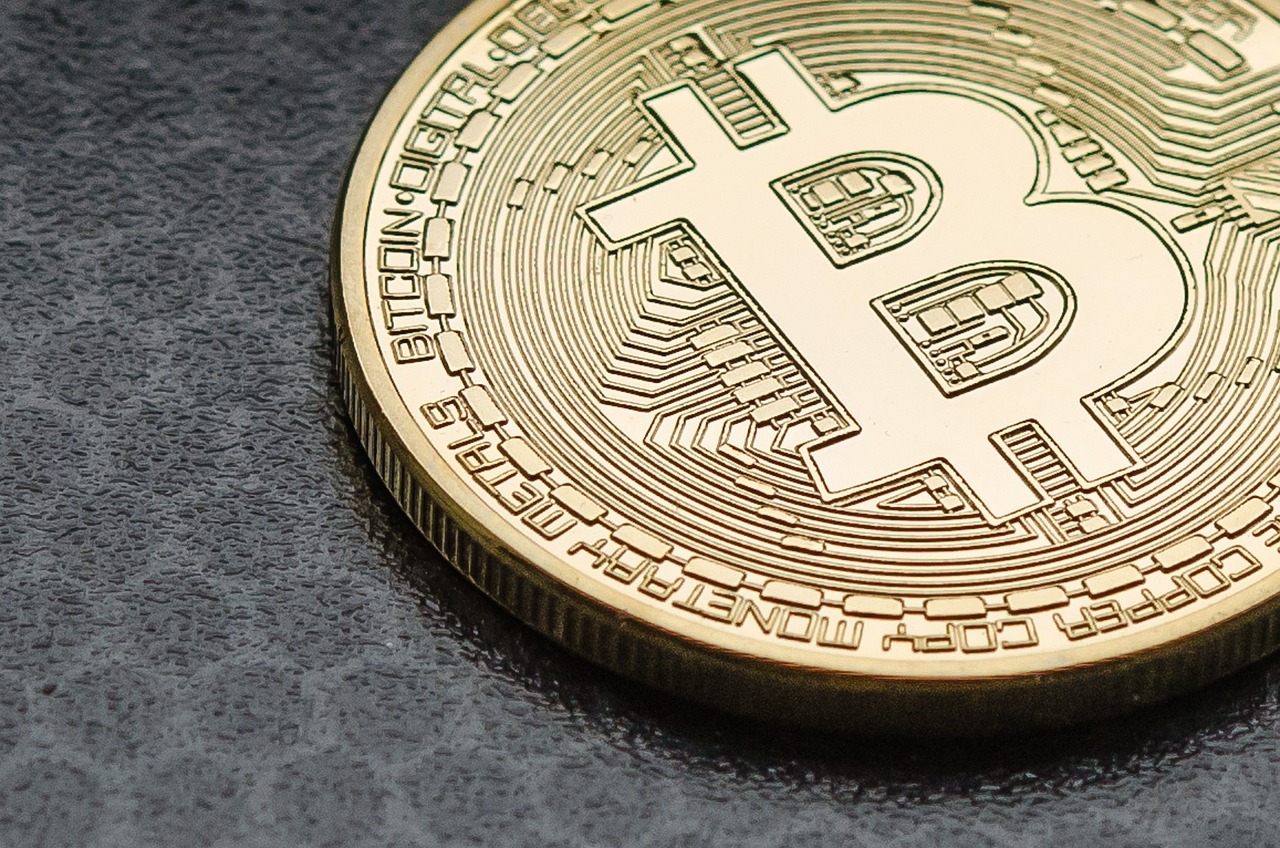
Utilizing Market Analysis Tools
When it comes to trading cryptocurrencies, one of the most powerful allies you can have in your corner is market analysis tools. These tools are like your personal treasure map in the chaotic world of crypto, guiding you through the ups and downs of price movements and helping you make informed decisions. But what exactly are these tools, and how can you harness their power? Let’s dive in!
Market analysis tools can be broadly categorized into two main types: technical analysis tools and fundamental analysis tools. Technical analysis tools focus on price movements and trading volumes, allowing you to identify patterns and trends over time. On the other hand, fundamental analysis tools look at the underlying factors that can affect the value of a cryptocurrency, such as news, developments, and market sentiment. By utilizing both types of analysis, you can create a well-rounded trading strategy that adapts to the market's ever-changing landscape.
One popular technical analysis tool is the Moving Average (MA). This tool smooths out price data over a specified period, helping you identify trends and potential reversal points. For example, the Simple Moving Average (SMA) takes the average price over a set number of days, while the Exponential Moving Average (EMA) gives more weight to recent prices, making it more responsive to new information. Here's a quick comparison:
| Type of Moving Average | Description | Best Use Case |
|---|---|---|
| Simple Moving Average (SMA) | Averages prices over a specific period | Identifying long-term trends |
| Exponential Moving Average (EMA) | Gives more weight to recent prices | Spotting short-term trends |
Another essential tool in your arsenal is the Relative Strength Index (RSI). This momentum oscillator measures the speed and change of price movements, helping you determine whether a cryptocurrency is overbought or oversold. An RSI above 70 typically indicates that the asset is overbought, while an RSI below 30 suggests it may be oversold. This can be a valuable signal for when to enter or exit a trade.
Now, let’s not forget about fundamental analysis. Keeping an eye on news outlets, social media, and influential figures in the cryptocurrency world can provide insights that technical indicators might miss. For instance, the announcement of a major partnership or regulatory changes can lead to significant price movements. Using tools like CoinMarketCap or CryptoPanic can help you stay updated on the latest news and sentiment surrounding various cryptocurrencies.
In addition to these tools, it's crucial to develop a habit of monitoring market sentiment. Tools like Fear and Greed Index can give you a snapshot of how investors are feeling about the market, which can be a valuable indicator of potential price movements. Remember, the market is influenced not just by numbers but by emotions too!
In conclusion, utilizing market analysis tools effectively can significantly enhance your trading strategy. By combining both technical and fundamental analysis, you can make more informed decisions, reduce risk, and ultimately increase your chances of success in the volatile world of cryptocurrencies. So, gear up, get your tools ready, and let the numbers guide you to your next big win!
- What are the best market analysis tools for beginners? Tools like Moving Averages, RSI, and news aggregators like CoinMarketCap are great starting points.
- How often should I check market analysis tools? It's advisable to check them regularly, but avoid becoming overly obsessed. Daily or weekly checks can be sufficient.
- Can market analysis tools guarantee profits? No tool can guarantee profits, but they can help you make more informed decisions and manage risks effectively.
- Is it better to focus on technical or fundamental analysis? A combination of both is often the best approach, as they complement each other and provide a fuller picture of the market.

Following Influential Market Figures
In the fast-paced world of cryptocurrency trading, staying ahead of the curve is essential, and one of the most effective ways to do this is by . These individuals often possess deep insights into market trends, emerging technologies, and potential shifts in investor sentiment. By keeping an eye on their analyses and predictions, you can make more informed trading decisions. But who are these influential figures, and how can you effectively follow them?
First, let’s identify some key categories of influential figures in the cryptocurrency space:
- Industry Experts: These are professionals with extensive experience in finance, technology, or both. They often share research and insights through blogs, podcasts, and social media.
- Influential Traders: Some traders have built a reputation for their successful trading strategies. They often share their thoughts on market movements and can provide real-time analysis.
- Developers and Founders: The people behind cryptocurrency projects often have the most direct knowledge of their coins’ potential. Following their updates can give you a glimpse into future developments.
- Financial Analysts: Analysts from established financial institutions may offer valuable perspectives on cryptocurrencies and their role in the broader financial market.
Now that you know who to follow, let’s talk about how to keep track of their insights. Social media platforms like Twitter and LinkedIn are excellent for real-time updates. Many influential figures regularly post their thoughts, analyses, and market predictions there. Additionally, platforms like Reddit and specialized forums can be great resources for discussions and insights shared by these market leaders.
Another effective way to stay updated is by subscribing to newsletters and podcasts. Many industry experts offer free newsletters that summarize the latest trends and provide market analyses. Podcasts can also be a fantastic way to absorb information while on the go. Imagine listening to a seasoned trader share their insights during your morning commute – it’s like having a personal mentor guiding your decisions!
However, while it’s beneficial to follow these influential figures, it’s crucial to maintain a critical mindset. Not every prediction will be accurate, and the cryptocurrency market can be notoriously unpredictable. Always cross-reference information and consider multiple perspectives before making any trading decisions. This approach will help you cultivate a well-rounded understanding of the market and mitigate risks associated with following a single source.
In conclusion, following influential market figures can provide you with valuable insights and enhance your trading strategy. By diversifying the sources you consult and maintaining a critical perspective, you can better navigate the volatile waters of cryptocurrency trading and make more informed decisions. So, who will you start following today?
Q: How do I find influential figures in the cryptocurrency market?
A: You can start by exploring social media platforms like Twitter and LinkedIn, where many experts share their insights. Additionally, forums like Reddit and specialized cryptocurrency news sites often highlight influential figures and their contributions.
Q: Should I follow just one influential figure?
A: No, it’s advisable to follow multiple figures to get a well-rounded view of the market. Different experts may have varying opinions and insights, which can help you make better-informed decisions.
Q: How can I verify the credibility of an influential figure?
A: Look for their background, experience, and the quality of their past predictions. Engaging with their content and seeing how it aligns with actual market movements can also help gauge their credibility.
Frequently Asked Questions
- What are cryptocurrency exchanges?
Cryptocurrency exchanges are platforms that allow you to buy, sell, or trade cryptocurrencies. They function similarly to stock exchanges, providing a marketplace for traders to exchange digital assets. Understanding the different types of exchanges—like centralized and decentralized—can help you choose the right one for your trading needs.
- How do I choose the right cryptocurrency exchange?
Selecting the right exchange is crucial for your trading success. Consider factors like security features, fee structures, and user experience. Look for exchanges that offer two-factor authentication and cold storage to protect your assets. Additionally, understanding the fee structures can help you avoid unexpected costs that might eat into your profits.
- What security features should I look for in an exchange?
When choosing an exchange, prioritize security features. Look for two-factor authentication, which adds an extra layer of protection, and cold storage options that keep your assets offline. Insurance policies that cover potential losses from hacks are also a big plus, ensuring peace of mind while you trade.
- Why is regulatory compliance important?
Regulatory compliance is essential because it affects the reliability and security of an exchange. Exchanges that adhere to regulations are generally more trustworthy and offer better protections for users. Understanding the regulatory landscape in your jurisdiction can help you make informed decisions about where to trade.
- What are common fees associated with cryptocurrency exchanges?
Common fees include trading fees, which are charged for each transaction, and withdrawal fees when you take your funds out of the exchange. Some platforms might also have deposit fees. Familiarizing yourself with these fees can help you choose an exchange that aligns with your trading strategy and minimizes costs.
- How can I diversify my cryptocurrency portfolio?
Diversifying your portfolio involves spreading your investments across various cryptocurrencies instead of putting all your eggs in one basket. This strategy helps mitigate risks, as different assets can perform differently under various market conditions. Consider investing in a mix of established coins and promising altcoins to balance potential gains and losses.
- What are stop-loss orders, and how do they work?
Stop-loss orders are automated instructions to sell a cryptocurrency when it reaches a certain price. They are crucial for protecting your investments during market downturns. By setting a stop-loss order, you can limit potential losses and take emotion out of trading decisions, allowing you to stick to your strategy even in volatile conditions.
- How can I keep up with market trends?
Staying informed about market trends is vital for successful trading. Utilize market analysis tools, follow credible influencers, and subscribe to cryptocurrency news outlets. These resources can provide valuable insights and help you make informed trading decisions based on real-time data and expert opinions.
- What types of market analysis tools are available?
There are various market analysis tools available, including technical analysis tools that help you study price movements and chart patterns. Fundamental analysis tools focus on the underlying factors affecting a cryptocurrency's value, such as news events and technological advancements. Combining both approaches can provide a comprehensive view of the market.
- How can I identify credible market influencers?
Identifying credible market influencers involves researching their backgrounds, following their track records, and checking their engagement with the community. Look for influencers who provide transparent insights and have a history of accurate predictions. Following reputable figures can help you gain valuable insights into market trends and movements.



















